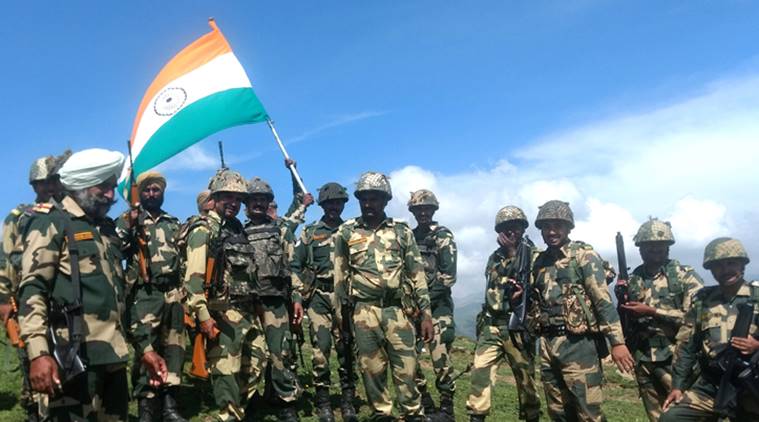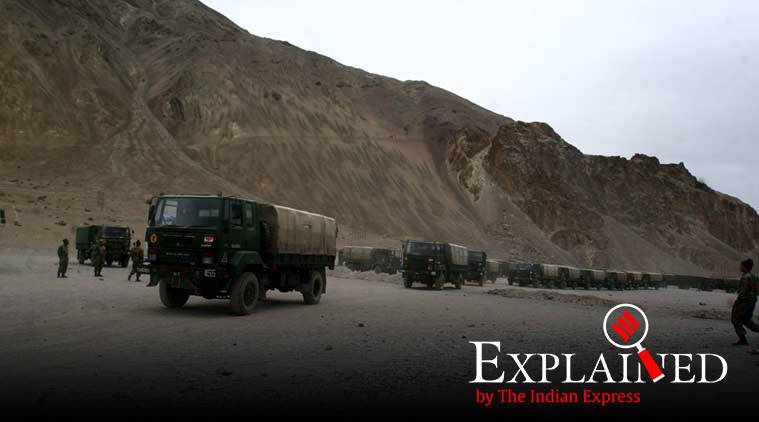The unprecedented high levels of tension at multiple locations in eastern Ladakh on the disputed India-China border, where Chinese soldiers have moved into Indian territory across the Line of Actual Control (LAC), has raised questions about the Chinese motives for this action. Most observers were eagerly waiting for Chinese Foreign Minister Wang Yi’s annual press conference on the sidelines of the Communist Party Congress for an explanation, but his 100-minute long presser in Beijing on Sunday did not mention India at all.
“The Chinese learnt from the public handling of the Doklam crisis. They thought India would be quick to brief the media, so they did it first and continued to do so. We were calm and measured, calling for discussions and negotiations. They are trying to avoid that kind of situation. Quiet diplomacy has space to produce results in these kinds of situations,” Gautam Bambawale, who was India’s ambassador to China from 2017 to 2018, told The Indian Express.
“China’s actions are hard to decipher, especially in the absence of any authoritative statements from Beijing,” said Taylor Fravel, Professor of International Relations at MIT and author of two major books on China’s territorial disputes and its military strategy.
“The simplest explanation perhaps is that China is responding to India’s efforts to bolster border-area infrastructure in Ladakh after the completion of the DSDBO road. After India’s move into Doklam in 2017, China is perhaps especially sensitive to Indian activity along the disputed border. Around Galwan, in particular, China may be seeking to pre-empt an Indian effort to improve its links to the LAC”, he added. The Galwan river valley is pictured on this map. (Google Maps)
The Galwan river valley is pictured on this map. (Google Maps)
 The Galwan river valley is pictured on this map. (Google Maps)
The Galwan river valley is pictured on this map. (Google Maps)
But Ashok Kantha, who was India’s ambassador to China from 2014 to 2016, argues that the Chinese “seem to be in fact physically changing the ground position and preventing our troops from undertaking regular patrolling.”
“There are some major changes from the earlier pattern of what we have witnessed with regard to the Chinese behaviour on the border: one, they have reportedly come in large numbers into a new area (Galwan river valley) which had not been contentious in terms of the alignment of the LAC; two, they are staying put, dug down and in tents and not just as a short-term patrol; three, these incursions are happening in multiple locations; and four, they have become more assertive and aggressive in their behaviour,” he said.
“On both sides, infrastructure development is going on, and we have caught up in the last 7-8 years in Ladakh in a big way, with improved access to the LAC. I’m using LAC as a loose term because there are different perceptions of the LAC on both sides. These two things together, where the Chinese are concerned that we have better access to the frontier and their LAC is not the same as ours, has led to the situation in Galwan. To link it with FDI norms is a bit of a stretch,” Bambawale added.
Lt General DS Hooda (retd), who was the Northern Army Commander during the 2014 standoff at Chumar, agrees “there is certainly an element of coercion in what the PLA is doing along the LAC. In the past, the redlines of both sides were clear and limited to a specific geographical area, e.g., Chumar or Doklam.
“With multiple intrusions, the Chinese have upped the ante with a view to pressure India. I really can’t speculate about what their final intentions are, but their behaviour carries great risks. As past incidents show, India will not back off from matching military moves.” he said. Soldiers near the Line of Actual Control at Chushul, 59 kilometres from Pangong lake in Leh. (Express File Photo: Shuaib Masoodi)
Soldiers near the Line of Actual Control at Chushul, 59 kilometres from Pangong lake in Leh. (Express File Photo: Shuaib Masoodi)
 Soldiers near the Line of Actual Control at Chushul, 59 kilometres from Pangong lake in Leh. (Express File Photo: Shuaib Masoodi)
Soldiers near the Line of Actual Control at Chushul, 59 kilometres from Pangong lake in Leh. (Express File Photo: Shuaib Masoodi)
Kantha contends that “this is part of a larger pattern of behaviour from the Chinese and should not be seen as localized and isolated incidents in pockets along the India-China border. It is reflective of increased Chinese assertiveness. Look, how are their diplomats talking? We didn’t create the term wolf-warrior diplomacy, they did. The Chinese media has put out that there are clear instructions to their diplomats to push back. It is possible that similar orders have been passed on to the military commanders as well, both along the India-China border and in the South China Sea to be more assertive.”
“The broader context is the need for China to show strength amid the pandemic that originated in Wuhan, which has harmed the Chinese economy and worsened relations with many countries,” said Fravel. This is a view which Kantha also shares, “The activation of border areas by China could also be part of its pressure tactics and its desire to gain leverage vis-a-vis India with regard to issues in bilateral relations and matters like Covid and WHO.”
Bambawale is also concerned about the incidents of physical violence between Indian and Chinese soldiers during the current tensions, “Our established SOPs and drills have not worked this time and new drills will be required as the situation on the ground has changed. But the big thing is the absence of a mutually agreed line – you can call it LAC or whatever – which both armies know is not to be crossed. Till that happens, these situations may occur again.”
“We should not be downplaying these serious developments in India-China border areas,” warned Kantha.

No comments:
Post a Comment